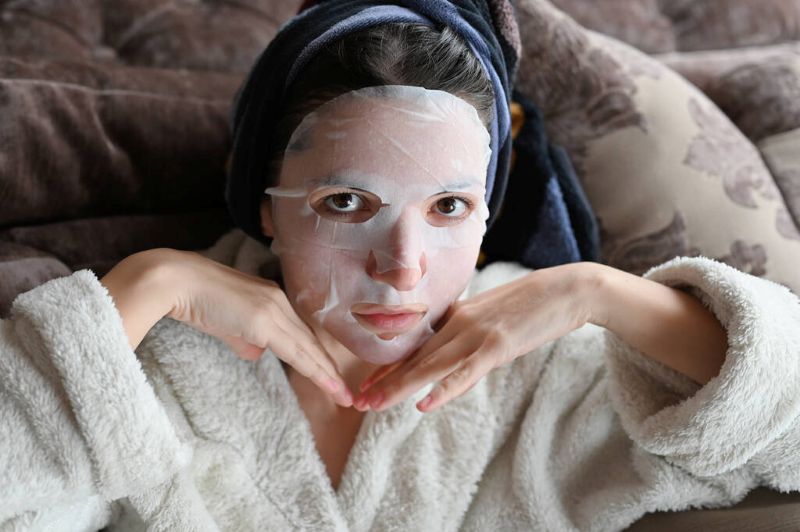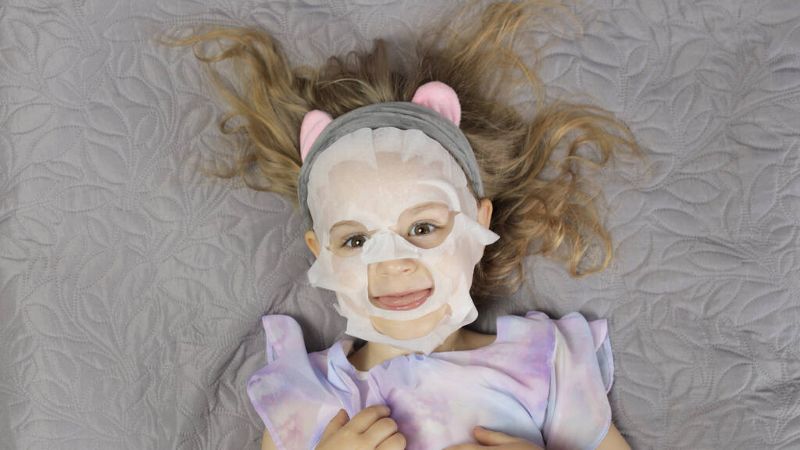5 min read
932 words
It was a moment that first brought me joy, but then quickly shifted to a deep sense of confusion and worry. My daughter, who is still figuring out her preteen years, attended a friend’s birthday party in May, surrounded by laughter, cake, and the usual assortment of brightly wrapped gifts. However, among the typical gift-cards and books, one present caught my attention: a beauty face mask, given to the birthday girl by another young friend. The moment I saw it, I felt a knot tighten in my stomach. A face mask? For a preteen? My daughter is about to enter her teenage years, and just the thought of her suddenly wanting “Azelaic Acid Rescue Pimple Patches” or a “Watermelon Glow Hydrating & Soothing Jelly Sheet Mask” from Sephora gave me chills. This moment was a clear, personal reminder of a widespread trend I’ve been hearing about: the emergence of “Sephora kids.”
The Emergence of “Sephora Kids” and My Increasing Worry
The phrase “Sephora kids” has become a common term for a new wave of Gen Z and Gen Alpha kids who are surprisingly obsessed with detailed skincare routines. I’ve come across articles explaining how these young fans are creating chaos in major beauty stores, crowding the aisles and sometimes acting out in their eager chase for the newest serums and masks. It’s reached a point where some summer camps are even banning tweens from sneaking fancy skincare products into their cabins. This trend isn’t just innocent fun; it marks a major change in how the beauty industry functions and how kids view self-care.
I’ve noticed that the beauty industry is increasingly focusing on younger audiences, with more skincare products being specifically aimed at children. This trend is largely fueled by viral content on social media, especially on platforms like TikTok, where complex skincare routines have become a sensation among teens and, worryingly, even younger kids. The appeal of perfect skin, the pressure to stay trendy, and the desire to imitate popular influencers create a strong attraction for these young individuals.
What really concerns me is the financial side as well; these “Sephora kids” are reportedly spending a lot of money on serums, masks, and a whole bunch of products that I believe are totally unnecessary and could be harmful to their delicate skin. My daughter, being at that impressionable preteen stage, is precisely the group this trend aims at, and as a parent, I feel a deep responsibility to comprehend and handle it properly.
Unpacking the Ingredients: Why Less Is More for Young Skin

As I began to look into the kinds of products that young consumers are drawn to, my worries grew. Many of the popular routines I’ve come across include ingredients that just aren’t suitable for developing skin. These products often feature things like citric acid and glycolic acid, which are known to increase sensitivity to the sun and cause irritation. Even more troubling is that a lot of these complex daytime routines shown in videos don’t even include the most essential protective item: sunscreen. This mistake is really concerning, especially when paired with ingredients that can make skin more prone to sun damage.
One ingredient that frequently appears in these products is hydroxy acid, mainly used for treating acne. While it can be beneficial for teens with specific skin issues when guided by a dermatologist, for preteens and teens without major acne, the chances of allergic contact dermatitis and other negative reactions far outweigh any possible benefits. Just the idea of my daughter using something that could lead to a painful allergic reaction on her sensitive skin is really worrying. The same applies to other trendy ingredients, like retinol, which is well-known for its effectiveness in tackling both wrinkles and pimples. While it’s extremely helpful for adult skin, retinol is way too strong for adolescent skin, which doesn’t have the same issues as older skin and can easily get irritated by such strong substances.
Additionally, products that include other well-known hydroxy acids, like glycolic or lactic acid, function as chemical peels. They are meant to remove older, dead skin cells and are very potent. The thought of applying these harsh substances to young, developing adolescent skin is quite concerning. Their skin is still growing; it is naturally tough and usually doesn’t require being “rescued” or “peeled” in this way. Over-exfoliating and using strong active ingredients can damage the skin’s natural barrier, resulting in dryness, redness, heightened sensitivity, and even lasting harm.
Navigating skincare for preteens can definitely seem like a tricky situation when confronted with these trends. While it’s really important to teach older kids and preteens how to take care of their skin properly, dermatologists all agree that keeping their routine straightforward is essential. Instead of the complicated multi-step routines promoted by social media, what they really need is a gentle and protective method. A simple cleanser to remove impurities, an oil-free moisturizer to keep their skin hydrated without blocking pores, a lip balm for dry lips, and importantly, sunscreen to guard against UV damage are all they truly require.
I have a clear opinion on this topic: as parents, we need to assist our kids in building a healthy and realistic view of their bodies and self-care. This involves steering them away from harmful trends that focus on complicated, chemical-heavy routines instead of basic skin health. I want my daughter to realize that real beauty comes from within, backed by simple and safe habits, rather than depending on a bunch of costly, unnecessary, and possibly harmful products.
